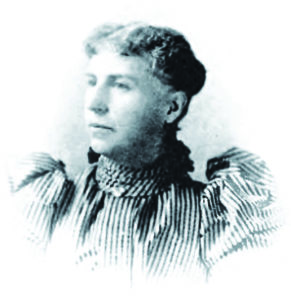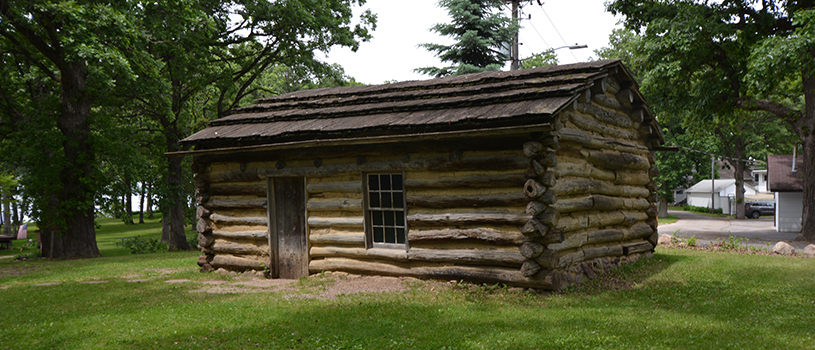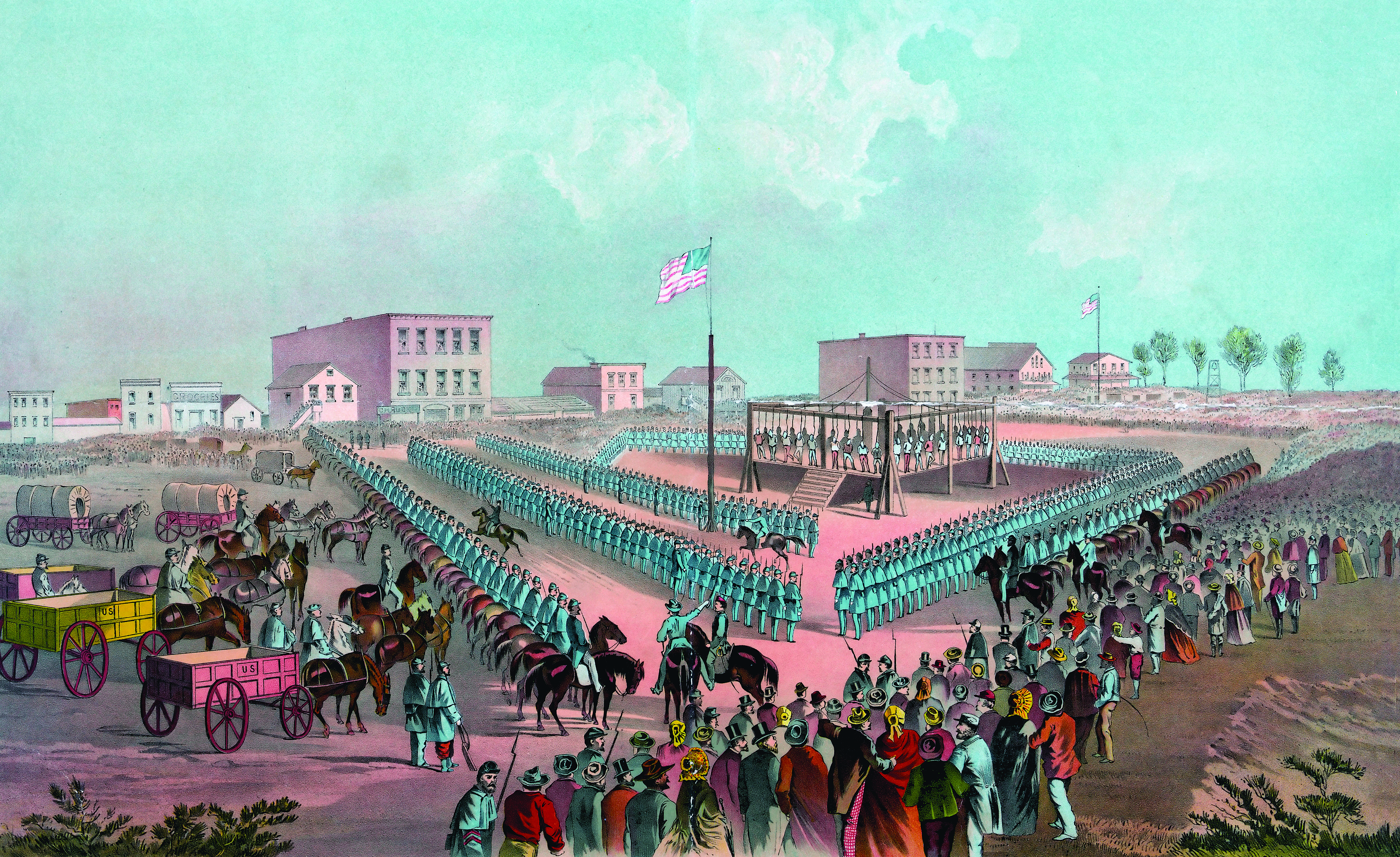Taken hostage by an angry, starving Sioux tribe who slaughtered her family, Abbie Gardner stayed alive, and later made a career of telling her story of survival

Early in March 1857, a band of Dakota Sioux approached Spirit Lake, a tiny settlement in northern Iowa. The Indians, led by a chief named Inkpaduta, had come from their usual locale, along the border between the Minnesota Territory and the state of Iowa, to look for food. The six white families homesteading at Spirit Lake had arrived the previous summer in time to build cabins but not to plant. They expected to survive the Midwestern winter on stockpiled provisions. The winter had been harsh. No one had enough to get by on.
Hunger and other ills had been stalking the Indians. Inkpaduta, 55, had lost a grandchild to starvation. A drunken whiskey trader had killed his brother; when Inkpaduta reported the slaying to white authorities, the local prosecuting attorney merely nailed the murdered man’s head above his door. Other Dakota factions had signed a treaty with the American government, but Inkpaduta had not, becoming a renegade. He belonged to a people with 50-some lodges in an area now infiltrated by white settlers, and along his band’s path that March he led raids that escalated in violence and destruction. These attacks turned murderous at Spirit Lake, where Inkpaduta and fellow raiders kidnappedAbbie Gardner, 13, who before being repatriated spent nearly three months in captivity. Inkpaduta became a notorious figure in Iowa frontier history. Decades later, Abbie Gardner bought the family cabin at Spirit Lake and chronicled her ordeal. From the one-room dwelling, she told her story and sold postcards and Native American items, establishing one of her state’s earliest roadside attractions. It remains one today.
Abbie Gardner’s father, Rowland, with his wife, children, and in-laws, had arrived in the Spirit Lake area in July 1856 to find a handful of active homesteads. The nine-member family threw up a rough log cabin in which to live and store provisions. By February, snow around Spirit Lake was four feet high. The Gardners were not sure of surviving to spring. On the morning of March 8, 1857, Inkpaduta and a dozen men came to the settlement, asking for and getting food and departing without incident. Around 3 p.m., the group returned, again seeking sustenance at the Gardner cabin. When Rowland Gardner turned to reach for something to give the visitors, an Indian shot him dead. A melee erupted; by the time the killing was over, 40 settlers had died. Surviving Indians—no count was made of deaths among their party—abducted Abbie and three other young women.
The girls’ captors put them to work. Abbie later reported having to haul a 70-pound load—“eight bars of lead, one pound of bullets, one tent-cover made of the thickest and heaviest kind of cloth, one Indian blanket, one iron bar about four feet long and an inch thick, a stick of wood of considerable weight, a heavy gun, and in addition to all this a flat piece of wood about four feet long to keep the back strait.” Now the renegades’ property, Abbie had her head and face painted red and her hair greased by Indian women. The squaws did all the band’s work, Abbie later noted. “We, poor captives, were slaves of slaves,” she wrote. The Dakota diet of roots and meat disgusted her. She showed the Indians how to make dough using soda and cream of tartar—a process her captors called “growing bread.” The Indians put the white girl in the sun, she wrote, perhaps to darken her skin. Over the next 81 days, Abbie lost the company of her fellow captives. Two died, one from illness and exhaustion; Indians shot the other when she fell into a river and sold the third girl to another tribe. The renegades traded Abbie to a friendlier Sioux faction.
On March 24, around 100 pioneers assembled at Fort Dodge, 100 miles southeast of Spirit Lake, to go north to bury the settlement’s dead and search for the kidnapped girls. Two searchers froze to death. Federal officials, fearing that if pursued aggressively the Indians would slay their prisoners, worked cautiously. On May 30, three friendly Indians dispatched to rescue the band’s captives located Abbie. The emissaries obtained the girl’s freedom in exchange for two horses, 12 blankets, two kegs of powder, 20 lbs. of tobacco, 32 yards of blue squaw cloth, 37 and a half yards of calico, and a quantity of ribbon. When Abbie and her rescuers stopped at the Yellow Medicine Indian Agency, one escort presented her with a war cap, “a token of respect for the fortitude and bravery I had manifested and it was because of this that Inkpaduta’s Indians did not kill me,” she wrote. In time, Abbie Gardner married. She bore two children, and parted with two husbands. At Spirit Lake, notoriety arising from the massacres attracted a wave of settlement that included construction of a fort that within only two years was dismantled, to be replaced by a hotel.
On the larger canvas, tensions with the Sioux persisted. The Civil War interfered with payment to the tribe of promised federal funds, and again, as at Spirit Lake, starvation ravaged the Sioux, leading to a two-month uprising in 1862 near New Ulm, Minnesota, that left more than 600 settlers dead. In retribution, President Abraham Lincoln sentenced some 300 Santee Sioux to death, a punishment he commuted for all but 39. Inkpaduta participated in the fighting, but eluded capture, never surrendering and in 1876 fighting at Little Big Horn alongside Sitting Bull and other Sioux against U.S. Army General George Custer and the 7th Cavalry. He died in Manitoba, Canada, in 1881.
Haunted by the lingering effects of abduction, Abbie Gardner scraped by, residing in Ohio and elsewhere. In 1885, she published a memoir of her ordeal in which described how she searched for the Indians who helped free her and found Chetanmaza, 68 and nearly blind. By letter from South Dakota, Chetanmaza recalled to Abbie how when he and his companions encountered her she had been sitting “on the ground squaw fashion, with your hair greased and smoothly combed, and parting painted red, and both cheeks painted red, with red leggings and squaw dress on.” In 1891, Abbie, 47, returned to Spirit Lake and bought the land on which stood her family’s dilapidated cabin. She restored the structure, decorated it with Indian artifacts and paintings of the massacre, and opened her residence to the public for a fee. In 1895, Abbie and Chetanmaza were part of a crowd of 7,000 at the dedication of a 55-foot granite monument, topped by an arrowhead shape and bearing the names of the Spirit Lake dead and volunteers who pursued Inkpaduta. Abbie Gardner died in 1921. Her descendants still live in the vicinity. (For more information on the Gardner estate, go to iowaculture.gov/history/
sites/abbie-gardner-sharp-cabin.






